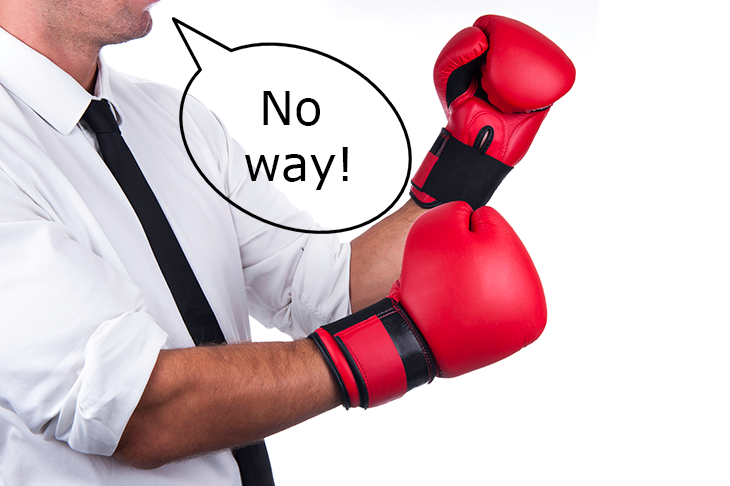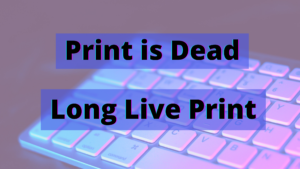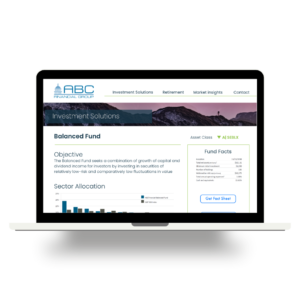Why Salespeople Fight Presentation Automation
.
Why do sales departments fight presentation automation? Over the years, I’ve spent a lot of time talking to asset management marketers about pitchbooks. The typical sentiment is that these sales tools are a pain to update and manage. Also, they are a point of contention between the marketing and sales teams. Marketers spend a lot of time keeping their slide library up-to-date and organized. But often times, these beautiful and compliant pitch materials become compromised once they get into the hands of the sales force. “It’s total piracy!” said one Product Management Executive we spoke to.
It’s true though. Salespeople are notorious for going rogue. They like customizing their own decks or using old versions saved on their desktop without thinking twice about branding or compliance.
In an effort to control the sales team’s sometimes erratic use of pitchbook materials, many asset management marketing teams seek to implement presentation management and automation solutions. There are great software solutions out there to help marketers organize, update, and evaluate their sales presentation materials. These programs also enable the sales force to create their own highly personalized decks in a quick and compliant manner. These types of tools being just one type of “sales enablement” technology creating buzz these days.
From a marketing perspective, automating pitchbook updates should be a no-brainer. It greatly reduces the manual effort to make quarterly data updates and accommodate ad-hoc customization requests. But when it comes to convincing the sales team that this solution also benefits them — it’s not always an easy sell. Salespeople tend to shy away from processes or systems they aren’t comfortable with. Plus, creating PowerPoints and PDFs is “marketing’s job”, right?
In order for any kind of sales enablement or pitchbook software to be implemented successfully, the sales force must fully embrace it. The head of marketing or product management typically has to work to convince the sales team to take a serious look at how the technology can help them achieve their goals. They also have to be ready with thoughtful responses to objections from the sales team. Here are a few of the more common objections we’ve heard from wholesalers and RIAs over the years, and how marketers can combat them:
“Creating pitchbooks isn’t my job. Marketing should do that.”
When a salesperson says “That’s not my job,” it’s often code for “I don’t really know how to do this and thus it will take up too much of my time…can’t you give me a start and get it 80% of the way there?”
This is a funny but true position we see the salespeople take. They expect marketing to perform both standard and custom presentation prep for them, and then they make changes anyway: pull out slides, add illustrations of their own, rearrange things, do whatever it takes to give them the content and flow they are comfortable with.
This is all fine as long as there are controls in place. Marketing should create useful materials and suggested templates for usage. Compliance controls should be rigid. But after that, the salespeople can and should be able to “make it their own” in a very flexible and turnkey manner. A well thought-out automation platform makes it extremely intuitive for a salesperson to create a pitchbook in a few minutes and gives them the resources at their fingertips to make a highly personalized pitch for every sales opportunity.
“I don’t want another program to log into and use.”
Most salespeople hate doing record keeping or other computer tasks. In fact there’s a saying that’s actually somewhat true (IMHO):
“Show me a salesperson whose status reports are up to date and I’ll show you a salesperson who is about to miss their quota.”
It sounds awful, but the truth is that the salespeople who are writing up lots of sales reports are often trying to justify how hard they’ve tried so that their lack of success is deflected onto circumstances. The salesperson who’s “killing it” is too busy to be that accountable.
There’s also the truth that the oversight that comes with keeping the CRM up to date with your activity can be oppressive. One salesperson in a solution sales environment told me, “I never post any of my opportunities at the 20% level until I absolutely have to. The moment I move it to 20% I’ll be fielding calls from all over the company wanting to know when I’ll be closing the deal. I don’t need that crap.”
So, this “too many systems” complaint is code for “I’m tired of everyone trying to track my every move.” There are two answers to this complaint:
1) Adding a good presentation management tool that’s integrated via single sign-on (SSO) won’t add to their login burden.
2) A well implemented and adopted presentation management tool will create better activity tracking and account statistics than the CRM.
To impress your sales audience, show them how integrating their other systems and processes can streamline their entire sales preparation experience. What if the automation tool leveraged your product and CRM data to construct hypothetical portfolios in just a few seconds? Your salespeople could develop highly personalized investment strategies for their clients from right inside the program based on the data that is already plugged-in and up-to-date.
Something else to point out is that they will LOVE having an audit trail when the auditer/SEC comes asking them for copies or proof of what they showed a client 3 years ago.
“I don’t need automation. I have my favorite presentation saved on my desktop. I just whip it out and change the cover page for each meeting.”
This objection gets to the heart of the sensibility of most salespeople. One way or another, they’ve built their favorite deck, taken out all the things they think of as fluff, re-arranged things, duplicated a couple of slides, and now it’s their pet presentation. Being familiar and fluid with the materials is really critical to making a good impression with the client. If salespeople have to go back to a system of record for each sales call they are going to either have to re-make all those changes or risk working with material they aren’t comfortable with.
In technology sales, I do the same thing; I update my demo platform as rarely as possible. I need to know it cold and have no surprises so that I’m smooth and confident about every click.
In a regulated industry though this is a huge risk! Data slides need to be up-to-date. They can change at any time, not just at quarter end. Compliance and disclosure slides have to stay where they need to be or it can create a liability. Company branding and background slides need to be kept in order or the impact of the story can be lost.
What if the presentation management system allows a salesperson to easily make a presentation template that they know and love…and to preserve it through updates and rebrandings? Is effort of pulling that favorite deck down and updating the cover page is no greater than opening one locally in PowerPoint and typing up a new cover page? What if the system then also enables advanced data reporting or visualizations? What if the system can be learned with less than an hour of training? And what if the system is integrated with the CRM and actually saves record-keeping effort?
If you can satisfy all of these criteria then you will very likely have a high user adoption rate. No excuses. If the system is the least bit inconvenient you will struggle to get sales to sign on to the program.
Conclusion
Getting your sales team to embrace new technology isn’t always easy. And because salespeople commonly object to having “another system to use” or “more work” added to their plate, marketers must carefully illustrate the value from the salesperson’s perspective. To overcome the objections discussed above, marketers must prove that their chosen solution will perform a service rather than create an additional reporting or administrative burden for the sales team.
If you have questions or would like some advice on how to convince your sales organization to get on-board with automating presentations, send me an email or connect with me on LinkedIn. I’d be happy to spend some time talking with you about it.
Thank you for reading! If you liked this post, feel free to share it. You can also subscribe to our blog to get new posts right to your inbox.
Here are some related resources that might interest you:







 Compare the Top 3 Finserv Content Automation Vendors [White paper]
Compare the Top 3 Finserv Content Automation Vendors [White paper] Create Pitchbooks the Drive Sales [White paper]
Create Pitchbooks the Drive Sales [White paper] Build vs. Buy: Should Your Financial Services Firm Outsource or Insource Marketing Technology? [White paper]
Build vs. Buy: Should Your Financial Services Firm Outsource or Insource Marketing Technology? [White paper]  10 Tips for Rebranding your Fund Marketing Documents [White paper]
10 Tips for Rebranding your Fund Marketing Documents [White paper]




